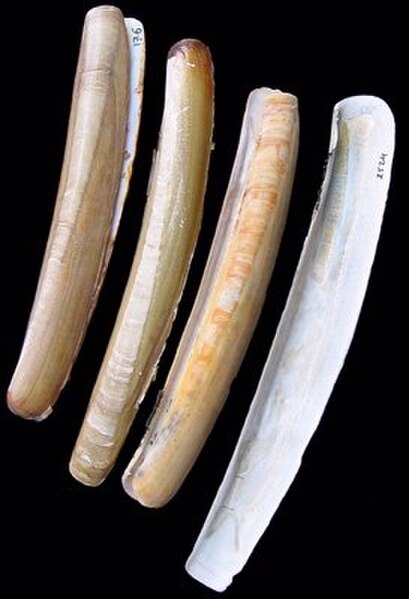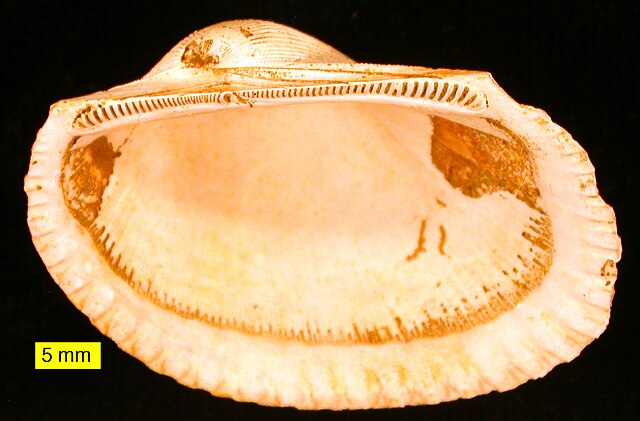The Pacific razor clam, Siliqua patula, is a species of large marine bivalve mollusc in the family Pharidae.
Image: Razorclm
Image: RAZOR CLAMS ON QUINAULT BEACH. THE CLAMS ARE SOLD COMMERCIALLY BY THE QUINAULT INDIAN RESERVATION NARA 545082
Bivalvia, in previous centuries referred to as the Lamellibranchiata and Pelecypoda, is a class of marine and freshwater molluscs that have laterally compressed bodies enclosed by a shell consisting of two hinged parts. As a group, bivalves have no head and they lack some usual molluscan organs, like the radula and the odontophore. The class includes the clams, oysters, cockles, mussels, scallops, and numerous other families that live in saltwater, as well as a number of families that live in freshwater. The majority are filter feeders. The gills have evolved into ctenidia, specialised organs for feeding and breathing. Most bivalves bury themselves in sediment, where they are relatively safe from predation. Others lie on the sea floor or attach themselves to rocks or other hard surfaces. Some bivalves, such as the scallops and file shells, can swim. Shipworms bore into wood, clay, or stone and live inside these substances.
Bivalvia
Empty shell of the giant clam (Tridacna gigas)
Empty shells of the sword razor (Ensis ensis)
Anadara, a bivalve with taxodont dentition from the Pliocene of Cyprus






